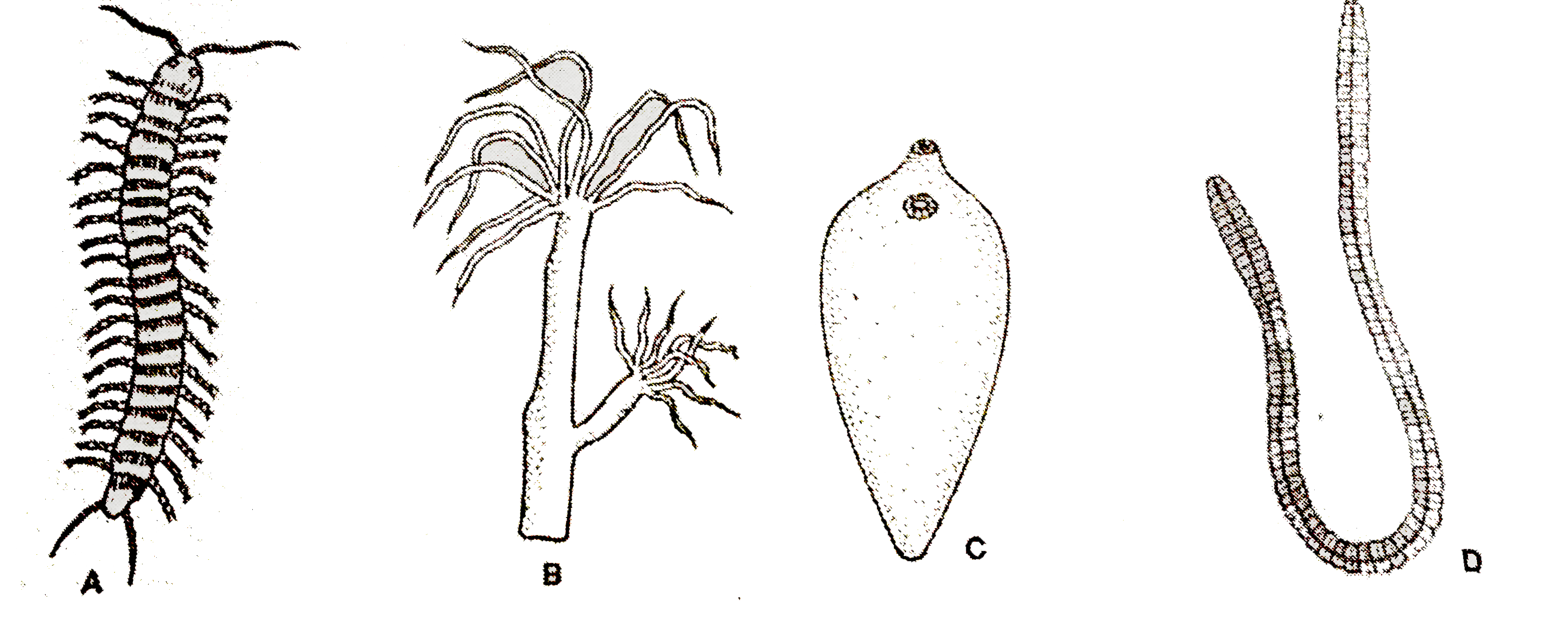Organisms without nucleus and cell organelles belong to
(i) fungi (ii) protista
(iii) cyanobacteria (iv) archaebacteria
(i) and (ii)
(iii) and (iv)
(i) and (iv)
(ii) and (iii)
The correct Answer is:B
Step by step video, text & image solution for Organisms without nucleus and cell organelles belong to (i) fungi (ii) protista (iii) cyanobacteria (iv) archaebacteria by Biology experts to help you in doubts & scoring excellent marks in Class 9 exams.
Related Playlists
- BOOK - LAKHMIR SINGH & MANJIT KAURCHAPTER - DIVERSITY IN LIVING ORGANISMSEXERCISE - Class Assignment1videos
DIVERSITY IN LIVING ORGANISMS
- BOOK - LAKHMIR SINGH & MANJIT KAURCHAPTER - DIVERSITY IN LIVING ORGANISMSEXERCISE - NCERT Textbook1videos
DIVERSITY IN LIVING ORGANISMS
- BOOK - LAKHMIR SINGH & MANJIT KAURCHAPTER - DIVERSITY IN LIVING ORGANISMSEXERCISE - Value Based5videos
DIVERSITY IN LIVING ORGANISMS
- BOOK - LAKHMIR SINGH & MANJIT KAURCHAPTER - IMPROVEMENTS IN FOOD RESOURCES EXERCISE - VERY SHORT ANSWER QUESTIONS28videos
IMPROVEMENTS IN FOOD RESOURCES
Knowledge Check
- Question 1 - Select One
Organisms without nucleus and cell organelles belong to
(i) fungi (ii) protista
(iii) cyanobacteria (iv) archaebacteriaA(i) and (ii)B(iii) and (iv)C(i) and (iv)D(ii) and (iii) - Question 1 - Select One
Organisms having cells without nuclear envelope and cell organelles belong to
(i) Fungi
(ii) Protista
(iii) Cyanobacteria
(iv) ArchaebacteriaA(i) and (ii) onlyB(iii) and (iv) onlyC(i) and (iv) onlyD(ii) and (iii) only - Question 1 - Select One
Bt toxin genes have been expressed in plants in order to provide resistance against
(i) lepidopterans and fungi
(ii) animals and bacteria
(iii) bacteria and fungi
(iv) coleopterans and dipterans
(v) lepidopteransA(ii) and (iii)B(i),(ii) and (iv)C(iii) and (v)D(iv) and (v) - Question 1 - Select One
Identify the organelles involved in the protein synthesis.
(i) ER
(ii) Ribosomes
(iii) Golgi apparatus
(iv) NucleusA(i), (ii)B(i), (ii), (iv)C(i), (ii), (iii)D(i), (ii), (iii), (iv) - Question 1 - Select One
The atomic nucleus contains
(i) protons (ii) neutrons
(iii) quarks (iv) leptonsA(i),(ii)B(i),(ii),(iii),(iv)C(i),(ii),(iv)D(i),(ii),(iii) - Question 1 - Select One
In the list of organisms given , those which reproduce by the asexual method are:
(i) banana (ii) yak (iii) yeast (iv) AmoebaA(ii) and ((iv)B(i),(iii) and (iv)C(i) and (iv)D(ii),(iii) and (iv)
Similar Questions
Find : (i) 932 (ii) 3225 (iii) 1634 (iv) 125−13
View Solution
(a) Identify figure A to D
(b) Which one of them is (i) diploblastic , (ii) triploblastic ?
(c) Which triploblastic animal is (i) Acoelomate (ii) Coelomate ?
(d) Which one belong to phylum
(i) Cnidaria , (ii) Platyhelminthes , (iii) Annelida , (iv) Arthropoda ?
(e) Which one of them has
(i) Organ level organisation , (ii) Organ-system level organisation ?
(f) Which one of them has excretory organs in the form of (i) Flame cells , (ii) Nephridia ?
(g) Which one of them has trachea as the respiratory organ ?View SolutionWhich of the following does not belong to class basidimycetes (i) Agaricus (ii)Trichoderma (iii) Puccinia (iv) Saccharomyces (v) Ustilago
View SolutionDiscuss the role of following with reference to immunity :
(i) Antibodies (ii) Helper-T cells (iii) Interferons (iv) Phagocytes.View Solution

